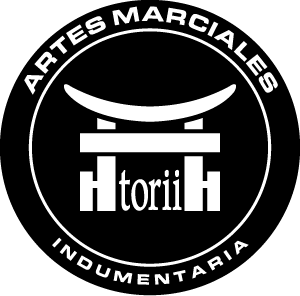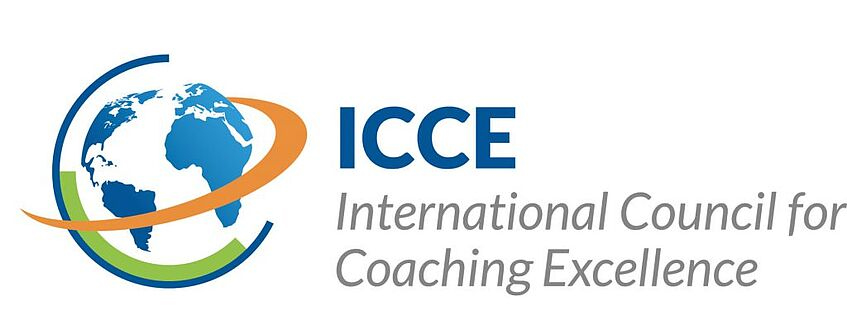Theses by ITF members
Welcome to the official archive of International Taekwon-Do Federation (ITF) theses.
This collection brings together research, reflections, and in-depth studies submitted by ITF practitioners from around the world as part of their journey in Taekwon-Do. The theses cover a wide range of topics — from technical analysis and teaching methodology to philosophy, history, and personal experience.
By making these works accessible in one database, the ITF honors the dedication of its members and provides an ever-growing resource for students, instructors, and researchers who wish to deepen their knowledge and understanding of Taekwon-Do.
Explore the archive to gain new insights, broaden your perspective, and continue the tradition of learning that underpins our martial art.
Please use the seach field for any free-text search. All fields will be searched.
| Author | Title | Country | Category | Abstract |
|---|---|---|---|---|
| Philip Lear | Improve Your Mindset, Improve Your language | England | Teaching | This thesis highlights reasons why sometimes we react negatively in certain circumstances and what we can do to change that. It also covers how we use some “stealth” negative language without even realising it and what alternatives we can use. |
| Gustavo Balbis | The importance of the hip thrust exercise for improving strength in the side kick | Argentina | Training | Let’s think of a (retractable) fist bump. A low-power blow is equivalent to a slow movement (low speed), which transfers little energy if it hits the opponent. For example, it will not be able to stop an attack, nor break a board. On the contrary, a powerful movement is a high-speed movement, which at the moment of impact will have the ability to move a body or break a table since it transfers more energy. |
| Christian Leo | Considerations and contributions from psychology ,especially form from the psychoanalysis´ perspective, about the effects of the practice and teaching of Taekwon-Do. | Argentina | Teaching | The idea of this work is to reflect and be able to think about certain individual and group psychic processes that occur during the transmission of our art. We will not only look at it from the point of view of transmitting our martial art based on its principles and philosophy, from the appropriate teaching methodology, but also from the effects that the practice of Taekwon-Do produces in terms of boosting self-esteem and the relationship this has with the management and control of aggressiveness. |
| Art van der Lee | How Taekwon-Do saved my life. Taekwon-Do after a heart attack | The Netherlands | Health | A sad day in my life was, In February 2008, while during training I suffered a heart at[1]tack. I was rushed to the hospital where a clogged artery was opened and a week later, I went into open heart surgery. I received four bypasses and some stents to keep other main arteries open. It took me several months to recover. Months I was not able to train and teach Taekwon-Do, this was a very dark period in my life. The good news was: I survived and the surgeon assured me this was because of my strong heart and body. Thank you, Taekwon-Do! |
| Nicholas Symonds | The Effective Teaching of Sound Fundamentals in ITF Sparring. | Wales | Competition, Training | The effective teaching of sound fundamentals in ITF sparring to beginner students is crucial for instructors because it provides a solid foundation for the development of essential attack, defence, and counter-attack techniques, resulting in improved sparring performance and greater overall success in Taekwon-Do training. |
| Nicholas Symonds | How can the quality of patterns competition be improved? | Wales | Competition | In this thesis I will investigate the current patterns competition system and propose alternative options which could lead to a more consistent and higher quality result, as well as taking into account what a pattern should be in Taekwon-Do as a martial art versus a sport. |
| Pantazis Konstantinos | Game Theory and Taekwon-Do | Greece | Philosophy, Training | People talk in terms like ‘tactics’ or ‘strategy’ every day. Most of the time they mean different things using these terms. What all those who use these terms have in common is to express something successful. A good strategy can bring success. This means that we have prioritised the objectives and instruments at our disposal and know how to use them. |
| Robert Boer | Back to Mars: Taekwon and Do | The Netherlands | Philosophy, Training | “What is Taekwon-Do, fundamentally? What is its nature and substance, its reason for being?” Marcus Aurelius, the great Roman philosopher and emperor, might ask such a question of General Choi Hong Hi, founder of Taekwon-Do, in the hereafter. |
| Rod Johnson | Perfect stretching | Canada | Training | A martial student stretches to improve his/her flexibility. Improved flexibility means better technique, increased power and more enjoyment in training. Correct stretching also provides many health benefits. Some of these are improved circulation, reduced anxiety, stress and fatigue, improved mental alertness, better posture, and decrease in the risk of muscle injury and muscle inflammation. By paying close attention to correct stretching a Taekwon-Do student can enjoy years of training and prolonged good health and well being. |
| Evan Davidson | Yin – Yang & the Oriental Theory of Creation | New Zealand | Philosophy, Teaching | Through this study of the Yin & Yang principles it had stirred my curiosity into the why and how we can use these principles for our own inner spiritual, mental and physical development, not only for use in the Martial Arts but for all of what life and nature can throw at us. We as humans need to ‘Adapt’. |
| Hayden Breese | The Future of ITF Taekwon-Do | New Zealand | Teaching | Why do some organisations grow and others decline? Why do some sports thrive while others remain marginalized? How do we ensure Taekwon-Do thrives in the modern world? Technological change is accelerating. Many technologies are converging and intersecting, resulting in innovations that seem like magic. Electric cars are on their way to mainstream status. Artificial intelligence is everywhere, in our pockets and driving our cars. Yet amongst all this growth, the world wrestles with a significant global health pandemic and the economic and societal aftershock. It’s not business as usual. How will Taekwon-Do and its organisations change to survive and thrive in this new world? |
| Peter Graham | Motivation for students over 60 years | New Zealand | Training | To the uninitiated, martial arts invariably presents itself as an area of involvement for either young children seeking some form of self-protection from such things as bullying (on their part) or a means of instilling a form of discipline and physical fitness (on the part of their parents). For the older person, of whatever gender, the aspect of protection for themselves and others they may be responsible for, plus the added benefits of overall fitness and resulting personal self-confidence, this can act as a lure to investigate the world of martial arts as opposed to just attending a gym to improve their health (weight-wise) and fitness |
| Ian Campbell | Is my training effective in a real self defence situation? | New Zealand | Self-Defense | Taekwon-Do is an effective, practical martial art, practiced by millions of people. The original art, developed by General Choi Hong Hi, has evolved with several different interpretations and organisations. My curiosity is not a competitive one nor is it pitched to validate any particular form. This is a dialog about how I have come to train with the International Taekwon-Do Federation, and how I now use and develop Taekwon-Do to reflect my interpretation 0f basic training methods, philosophy and technical application. |
| Mark Banicevich | Funding retirement for professional instructors | New Zealand | Teaching | Professional Taekwon‐Do instructors are self‐employed owners of small businesses. They do not have the benefits of specialists employed by corporations. This includes common employment benefits, such as pension schemes. The ITF cannot create the infrastructure to do these things for professional instructors – it would be far too’ inefficient for a small international entity to develop efficient global structures. Instead, the ITF should arm instructors with the information they need to act themselves, and measure their success based on the actions of those instructors. Therefore, the ITF should educate its instructors financially – in budgeting, debt management, wealth protection, accumulation and decumulation. |
| Kane Raukura | Digitising The Colored Belt Grading | New Zealand | Teaching | A major restriction to the examination procedure is the need to drop your eyes to write and take note of the students performance. To help remedy this situation, I investigated the use of a web based application to digitise the grading and allow the Examiner to quickly make notes while also keeping their eyes turned to the students more often. |
| Darren Ward | Advice for new umpires | New Zealand | Competing | For years I have thought about all the things that are not written in the rules that helps an umpire starting in their career (yes it is a career!). For over 20 years now I have taught B and C grade umpire courses nationally in New Zealand. This thesis is a compilation of the tips and tricks that I have learnt over my journey to becoming a national and international umpire (and all the things that I do not get to teach in umpire courses). The advice is classed into the different duties for an umpire. I hope these will help others to improve and grow as an umpire, but most importantly to have the confidence to enjoy the umpiring experience. |
| Paul McPhail | 6 Months to Black Belt Grading Success | New Zealand | Training | To achieve a black belt in any martial art is a great achievement. And the day of the grading itself is something you will remember for your entire life. You have already put in years of dedicated practice toward obtaining the required standard, but the last six months leading up to the grading are the most critical. I have seen many people come from nowhere to amazing in 6 months, through systematic, organised training. This e-book will show you how to do it. |
| Matthew Breen | Coaching Mnemonics for Patterns Chon-Ji to Ge-Baek | New Zealand | Competing | Every student is different, with individual idiosyncracies or interpretations that may require specific corrections. But what I find is that there are many small errors or inconsistencies which are common — occurring often enough across a variety of students such that I would find myself making the same corrections over and over. “I should write them down,” I thought. And this document is the result. My general filter for inclusion was that if I’ve had to explain a correction to more than two or three black belt students, it’s worth including. |
| Gromov Yury | The study of Taekwondo kick techniques from the biomechanics point of view. | Bulgaria | Training | In the world of martial arts, Taekwondo is widely recognized for its range and the advantages of its foot techniques. Taekwondo’s arsenal of foot techniques is so great that in order to cover it completely, a separate book in which each technique is described from the point of view of biomechanics (the physics of the human anatomy) would be needed |
| Garry Shaw | Self-Defence in Taekwon-Do | Scotland | Self-Defense | I like many others, believe that all TaeKwon-Do techniques have to be executed in class with absolute realism. When I see self-defence in some other classes, I take a step back and think, “really?… maybe it would be better done this way…….” When Master McNairn and I get together, we discuss this at length, and when I see what he teaches in the African development seminars, we both agree on what we’d like to see being taught – Realism!! |
| Anthony McKenna | Taekwon-Do vs The Roman Catholic church | England | Teaching | My hypotheses is “Does the moral guidance which is the backbone of Taekwon do fill the space left as a result of the decline in participation in Christian religions?” |
| Anthony McKenna | Taekwon-Do – The Art Of Leadership | England | Teaching | I suggest that the values, ethics and philosophy behind taekwondo build authentic leaders and that the “do”, the way or road, leads to an authentic leadership style, and that General Choi used oriental philosophy as the building blocks of his leadership model, a model which was not directly articulated by General Choi in his work but which is intrinsically part of his lifelong work to promote Taekwon-do. |
| Frank Vanberghen | Taekwon-Do and impact on the hips | Belgium | Health, Teaching | There are many hip injuries amongst Taekwon-Do practitioners all over the world, so I decided to write a thesis about this phenomenon and the possible solutions after research. Already after my Master grading in 2004 I decided to write an article for the ITF website about my ‘resurfacing hip surgery’ and the result. After my article was published on the ITF website and in Taekwon-Do Generation, I was contacted by persons from around the world about the Birmingham ‘resurfacing hip’ BHR. Previously I didn’t know that so many Taekwon-Do practitioners suffer from hip injuries because of various reasons |
| Håkan Hansson | Reflections upon The Tenets of Taekwon-Do | Sweden | Teaching | General Choi Hong Hi founded Taekwon-Do including the Tenets, meant as a guide for all serious students of the art. These tenets have guided all of us through the decades, years and days and are very important for the way we train, teach, inter-act and live. The way to interpret and implement them is sometimes obvious but at other times a rather complex task. Furthermore, the way to interpret them can differ from each individual due to personality and/ or philosophy but also depending on what role a person has. I would like to compare the interpretation and view of these tenets based on input I have gathered from some different “stakeholders”: |
| Cathy Downey | Women in Taekwon-Do | Canada | Training | Taekwon-Do was developed in the 1940’s as a method of hand to hand combat training for soldiers, all of whom were male, so it is somewhat understandable that it has an overall male focus. However, since most schools have female students as well as male, it is important for us, as instructors, and for the ITF as an organization, to acknowledge where bias exists in our martial art and take steps to address it. |
| Willy van de Mortel | My experience as a coach on Motivation and Motivating | The Netherlands | Competing | This thesis which I am writing for the International Taekwon-Do Federation (ITF) for my 9th Dan exam is about “My experience as a coach about – Motivation and Motivating” in Taekwon-Do sport, especially as I experienced it myself. Here I write down my experiences as an athlete, coach and parent over a period of 45 years of Taekwon-Do. I am convinced that a number of things are certainly recognizable for other athletes, coaches and parents. Looking back, I realize how important the subject of motivation and motivation is throughout my career so far in this beautiful sport. |
| Mariusz Steckiewicz | Analysis and Practical Implications of Various Types of Motions in Taekwon-Do Patterns | Vietnam | Training | The focus of this text is on the multiple technique combinations included in Taekwon-Do patterns, from a practical and scientific perspective. |
| Brendan Doogan | Name that technique! | New Zealand | Teaching | This resource comprise a thesis required for promotion to 4th Dan. The instructions for writing an essay or thesis for black belt promotion include that the writing should be of some use and interest to other Taekwon-Do practioners. Korean terminology is therefore the focus of this thesis. It is an area that needs strengthening in our Taeskwon-Do community. |
| Wogayehu Behailu | My Role in ITF Taekwon-Do in Ethiopia | Ethiopia | Training | When I started practicing Taekwon-Do in 1986 as a police officer complying with the rules and regulations of the Ethiopian Police Force, I did not expect to reach the 7th Degree or Master’s degree that I am currently competing for. But as much as I understood the art of Taekwon-Do, I had a strong desire and vision to reach the heights of the art in my country – Ethiopia. So, with all the effort and sacrifice required to master the art, I was able to complete my training time and practice better alongside my regular work. |
| Coos van den Heuvel | How to organize a championship on every level | The Netherlands | Competing | On the following pages I will give an example of the components that should be considered by the organizer of competitions. These are of course recommendations and guidelines and will be different for each event. For a regional or club competition there are of course totally different requirements than for e.g. a World Championship. The recommendations are accessible for every organizer and after reading them they can be used for those subjects that the umbrella organization considers necessary. |
| Neil David Franks | Taekwon-Do and Dyspraxia | Ireland | Health, Teaching | Using Taekwondo as a tool to help special needs students with emphasis on Dyspraxia |
| Ruben D. Suarez | Step Sparring | USA | Training | The Taekwon-do cycle is composed of five items: Dallyon, fundamental movements, patterns, sparring and self-defense. For the successful development of Taekwon-do skills, all of these elements must work together in a balanced and reciprocal way, constantly reinforcing one another, and the system of Taekwon-do as a whole. When most people think of martial arts, the first thing that comes to mind is sparring. Yet, sparring is only one of the five components constituting the physical composition of Taekwon-do; moreover, the category of sparring can be further classified into several different styles, including step sparring, which is considered the foundation for free sparring. |
| Ruben D. Suarez | The Importance of Trust and Moral Culture in Modern Society | USA | Teaching | The ambition of the human race has changed. We live in a world that has been invaded by technology and material consumption, while our society has come to value possessions over people, and quantity over quality. Yet, we strive to lead a life defined by the beliefs and values of our founder—beliefs that we learned from our own masters and strive to instill in our students today. |
| Martijn Lindeboom | Teaching Taekwon-Do with tradition, background and theory | The Netherlands | Teaching | Taekwon-Do is a very physical martial art, demanding for the body and a great asset to physical health and wellbeing. It is also a versatile sport with five very different areas of competition, and it is a strong basis for self-defense. Furthermore it also has a rich tradition, background and theory, with moral, mental and historical lessons to learn, which makes it very suitable to teach practitioners social skills, morality and citizenship. |
| Edwin & Ron Van Der Lee | Our Journey | The Netherlands | Training | The special relationship between identical twins is that, if there’s anyone else in the world that’s going to be the confidant that you need, it’s a twin. For sure everybody finds it at least interesting to see identical twins. They usually look the same, dress the same and act the same. From the time that we started our Taekwon-Do journey with our white belts, to the time that we now test for our 7th degree, we as identical twins, have walked nearly the same path. |
| Jack de Smit | The theory of power, Taekwon-Do training secrets and breaking techniques | The Netherlands | Training | The Encyclopedia written by Founder General Choi Hong Hi provides an explanation of the key skills required to apply 100% of our own capabilities. If we did not train in these skills, we would only be able to use 10 to 20% of us. This would mean that it would not be possible to perform severe breaking tests. It is therefore important that we learn to understand the skills and how we can best apply them. |
| Jonathan M. N. Emm | A Study of the Characters and History of 7 th Century Korea Honoured in ITF Taekwon-do Patterns | England | Teaching | When developing the patterns, General Choi wanted to establish Taekwondo as a uniquely Korean martial art, to distinguish it from Karate and the Japanese arts, from which it was developed. He therefore named the patterns after heroic and patriotic figures from Korea’s history, as well as some of the key events in his nation’s development. |
| Jonathan M. N. Emm | The Use of Taekwon-Do for Self Defence | England | Self-Defense | The purpose of this thesis is to discuss an issue that is traditionally thought to be at the very heart of Taekwon-Do and Martial Art: Self defence. |
| Fabián Izquierdo | Learning through play | Brazil | Training | What I explained to the father of Taekwon-Do at that time was that I had not invented a single new technique, but that what was involved was to take into account the age and integral development of the children when teaching.His answer echoes in my head to this day, almost 30 years later: ”When I developed Taekwon-Do, I thought on soldiers, not children.” |
| Christine Young-Jasberg | Teaching Taekwon-Do to Gen Z | New Zealand | Teaching | In this thesis I will share some insights from my observations from the past 13 years of teaching classes predominantly filled with Gen Z students. It is no longer enough that you are the black belt and their instructor. They are not obedient just because of these. They need reasons why to do what you say. They may only do what you say if you motivate them in the right way that suits them. |
| Niklas Enander | Body language at the initial stages of a self-defense situation | Sweden | Self-Defense | The purpose of this thesis is to give a guidance and point-of-views on what I call intuitive self-defense where you not only defend yourself with effective Taekwon-Do techniques but also by using other available means to put your opponent in a psychological disadvantage. |
| Niklas Enander | Developing ITF Taekwon-Do in Regions Not Yet Served by ITF | Sweden | Teaching | This thesis is based on my work and experiences of developing ITF Taekwon-Do in Africa 2012-18. I will start with the background of this journey.In 2011 I was asked to visit an old friend in Uganda in the summer of 2012. As I had never been in Africa, I found the prospect of going there quite exciting. At this time I was in preparation for my grading to 6th degree, so it was a natural thought for me to continue to train during my time in Uganda.This thesis is based on my work and experiences of developing ITF Taekwon-Do in Africa 2012-18. |
| Ken MacKenzie | Strengthening the Family Bond Through Taekwon-Do | Canada | Training | Some of the most common reasons that one chooses to join Taekwon-Do include the desire to learn self-defense, become more physically fit, and to enjoy it as a sport. Quite often, it is for only one of these reasons that they initially decide to give it a try. However, as their training progresses, the interest in all of these benefits begins to develop. My belief is that a very important benefit of training in martial arts and Taekwon-Do is confidence. This applies to both children and adults and can be a life changing benefit. |
| Annick Van Driessche | Women@ITF Taekwon-Do | Belgium | Training | When I started practising Taekwon-Do, doing grading for Master VII°degree was not something I had in mind. At first I just wanted to practise martial arts, but soon I really started to love Taekwon-Do and practising became an addiction. After a while I had new goals : becoming better in the different disciplines of Taekwon-Do & participating at championships. Becoming a black belt was the logical next step, just as teaching. The dojang became my second home, conducting classes a new mission. |
| Matias Picallo | Martiality, Verticality, Mastery | Spain | Teaching | In this thesis we want to delve into the concepts of Martiality, Verticality and Mastery, all of them related to each other while each one adds its own nuance. We consider that the exam for the graduation of Teacher constitutes an incomparable frame to reflect on these subjects, since it supposes the culmination of a stage. A stop on a path that never ends, but that invites us to continually return to reflect on it and its meaning. |
| Adrian Byrne | Adapting the ITF tournaments for athlete development | Ireland | Training | ITF events, whether national or international in nature, typically have to manage the logistics of bringing together hundreds or even thousands of participants in order to satisfy the requirements of economic viability, fairness of competition and short time frames. These events, whilst often successful as economic ventures, do not always meet the needs of the participants as well as they might. This is especially true in the case of younger and developing athletes |
| James Tjin-A-Ton | Peaceful World | The Netherlands | Teaching | In our own way we try to work on: I shall build a better and a more peaceful world. Taking into account to start with you as a teacher and as a role model and to send that out to the students. The different angles as described above can help with that. Our goal has been reached when after a while we see that an annoying, aggressive student has changed into a person who is open to feedback, helps others and respects us and his fellow students. Of course we cannot change everybody but changing and working for a more peaceful world starts with yourself. |
| Eddy Van Damme | Moral Aspects . ITF – Taekwon-Do in our Western Society | Belgium | Training | What is the cement that links the concepts ’morality’, ’martial art’ and ’Western society’ together? It tells something about ’me’, of course. I have always wondered about life, why it is so difficult, thinking about everything I was doing and why I was doing those things. I always thought there must be a way of living in which things weren’t so complicated as they are. I did, and I still do, a lot of things in my working – and spare time to explore life: theatre, philosophy, psychiatry, travelling around the world, reading, cooking, studying languages, running, watching films and, of course practising Taekwon-Do. But life stays complicated, the world isn’t as nice as we’d like it to be, and a lot of people live in miserable circumstances. |
| Eddy Van Damme | Opportunities in ITF Taekwon-Do for people with autism | Belgium | Health | Since 1990, my passion for ITF Taekwon-Do has only grown bigger as it became a specific interest that inspired not only a great part of my free time, but influenced my whole life. It went as a red thread through my existence and was always there even if everything else went wrong. ITF Taekwon-Do determines my life in a very important way and it has always done so since the start. This has everything to do with my particular attention and focus on this martial art and my way of being. |
| Rod Johnson | Nutrition and training in Taekwon-Do as a Vegan Athlete | Canada | Health | Taekwon-Do is a rigorous physical activity. For an athlete to excel in Taekwon-Do, he or she requires a diet rich in macronutrients. There is a great deal of information that promotes an animal-based diet as the best means to achieve optimal nutrition for athletic endeavors as well as day to day living. This paper will outline how a vegan (or plant based) diet can also provide the full spectrum of macro and micro nutrients required for proper health, the energy demands for everyday living and training in Taekwon-Do. |















